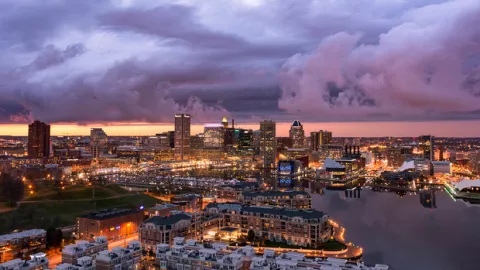
If you’ve read the recent criticisms of Baltimore by Donald Trump, you might be tempted to write the city off. In reality, Baltimore is on the brink of becoming a smart, sustainable city. Read on to learn the lessons it can teach others. And how you can learn from Baltimore (and other leading smart cities) in person. Background. Baltimore is the largest city in the U.S. state of Maryland. It has a population of 600,000 inside a metropolitan region of 3 million inside the Washington-Baltimore combined statistical area (CSA) of 10 million. Historically a leading seaport and manufacturing center, it has shifted to a service-oriented economy. Like every large city, Baltimore faces urban challenges such as crime, homelessness, and drug addiction. It also has a turbulent political climate. All the more reason Baltimore should be commended for its commitment to becoming a smart city. The Council is uniquely positioned to discuss Baltimore, since it was chosen as one of the five winners of the Council’s 2019 Readiness Challenge. That puts the city in good company. Other 2019 winners included Montgomery, AL, Racine, WI, San Diego, CA and Edmonton, Alberta. Past winners included the Commonwealth of Virginia, Orlando, Miami, Indianapolis, Philadelphia and Austin. Here are some of the reasons the judges chose Baltimore. Strong community partnerships. Here at the Council, we believe cities must involve all their stakeholders in their smart city planning right from the start. Baltimore has already forged strong partnerships with universities and the private sector — indeed, those relationships were one of the strongest parts of its application. Baltimore’s smart cities committee – which has more than 50 members from city department heads to business owners to advocates for low-income families – has been meeting monthly for two years. Amongst its goals is the wise effort to develop “a holistic governance structure to guide funding, development, and operation of Smart City infrastructure, services and initiatives.” That strong joint purpose will produce results. Inclusive goals. After seven years of working with cities around the world, the Council has sadly seen some smart city efforts devolve into special projects for special areas. Downtowns and affluent neighborhoods get new technology; poorer neighborhoods are often left out. We applaud Baltimore’s commitment to include vulnerable and under-served populations on its committee and in its project plans. Action orientation. It’s time for cities to move out of conversation mode and into action mode. In its Readiness Challenge application, Baltimore specified three strong, practical projects: 1) improving digital city services, 2) expanding education and workforce development, and 3) improving public security. When the Council visits Baltimore this fall for a Readiness Workshop, it will use its Smart Cities Activator online tool to help the city turn those project priorities into action plans with dates, deliverables, and funding. If you are a business looking for a new location or a solution provider looking for a strong business opportunity, you should be considering Baltimore. To learn from Baltimore in person, consider attending the Baltimore Readiness Workshop in December. To learn from Baltimore and a long list of current and past Readiness Challenge winners, please join us at Smart Cities Week Washington, DC, September 30 to October 2. What shone out in Baltimore’s Readiness Challenge application was a commitment to connecting the city’s residents to their government, enable an effective and productive workforce, build a digitally equitable community, and establish public-private partnerships. If you agree that a smart city requires leadership and community involvement, then you should consider Baltimore worthy of consideration, not criticism.



